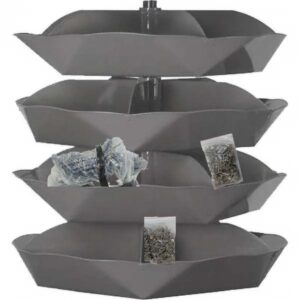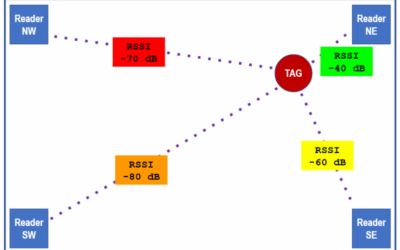Using RFID tags to keep track of tools is a great application of RFID and the use case comes up frequently. If done correctly, RFID can save an organization a ton of time and money along with reducing frustration for those in need of a tool that is missing in action because someone didn’t return it to its rightful place.
We had one customer tell us that not being able to find a specific tool when needed cost his company $100 per hour in lost productivity while they searched for it. He didn’t want to share how often this happened other than the fact that it was a significant pain point.
But expecting RFID asset tagging to provide a cure-all has set many companies up for disappointment. Too often we are approached to help with another integrator’s failed deployment. One vendor claimed UHF tags would give instant inventory of hundreds of small parts stored in small bags placed in a metal pick-bin. The reality turned out that the solution didn’t work accurately unless all the bags were perfectly stacked upright in a single layer. This storage requirement was impossible to maintain and the RFID system was abandoned because it created more problems than it solved.
Unreasonable expectations abound with RFID. A recent inquiry came to us with the following requirements for their tool tracking tags:
Provide live location of every tool in their building
Cost $1 or less per tool
Be small enough to fit on hand tools and not interfere with their use
Not fall off or be damaged from routine use or be easily removed by intent
Add to this, they wanted their RFID readers to be as simple to install as wireless speakers. It was not that any specific expectation was not achievable, but the combination of all of them was not possible. Needless to say, we were not able to help this client.
Another client wanted live GPS locations of their entire inventory using a small tag without a battery. This was another misaligned expectation.
The takeaway is there’s a lot to think through before adding RFID tagging to your process. Companies need to balance needs and budget against the capabilities and limitations of the technologies available.
Ultimately, only you can make the final determination if an RFID system will be or perhaps battery beacons are a good fit for your situation. However, receiving good advice on the journey is the most important very first step. We would be happy to explain the benefits and burdens of each RFID technology as well as to share various tagging methods, performance limitations, costs, and implementation efforts. Our goal is to make sure that any system we help create solves your company specific requirements.



0 Comments